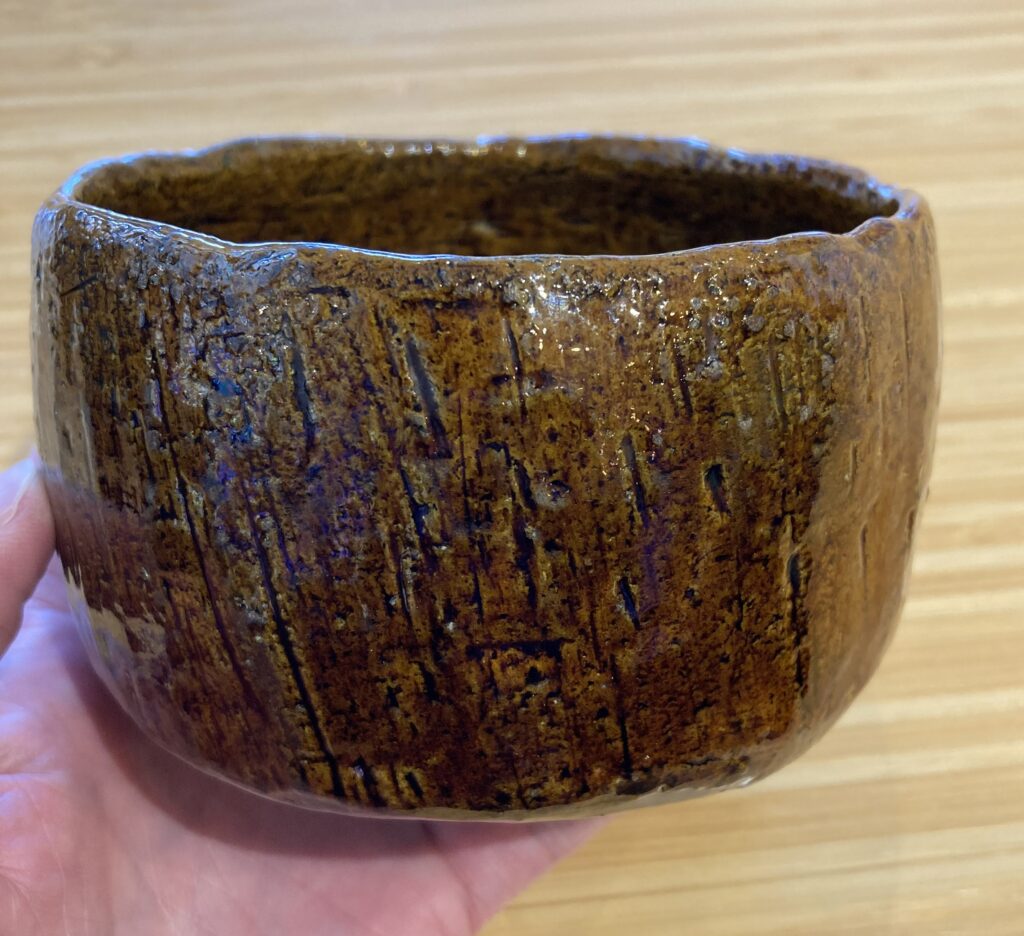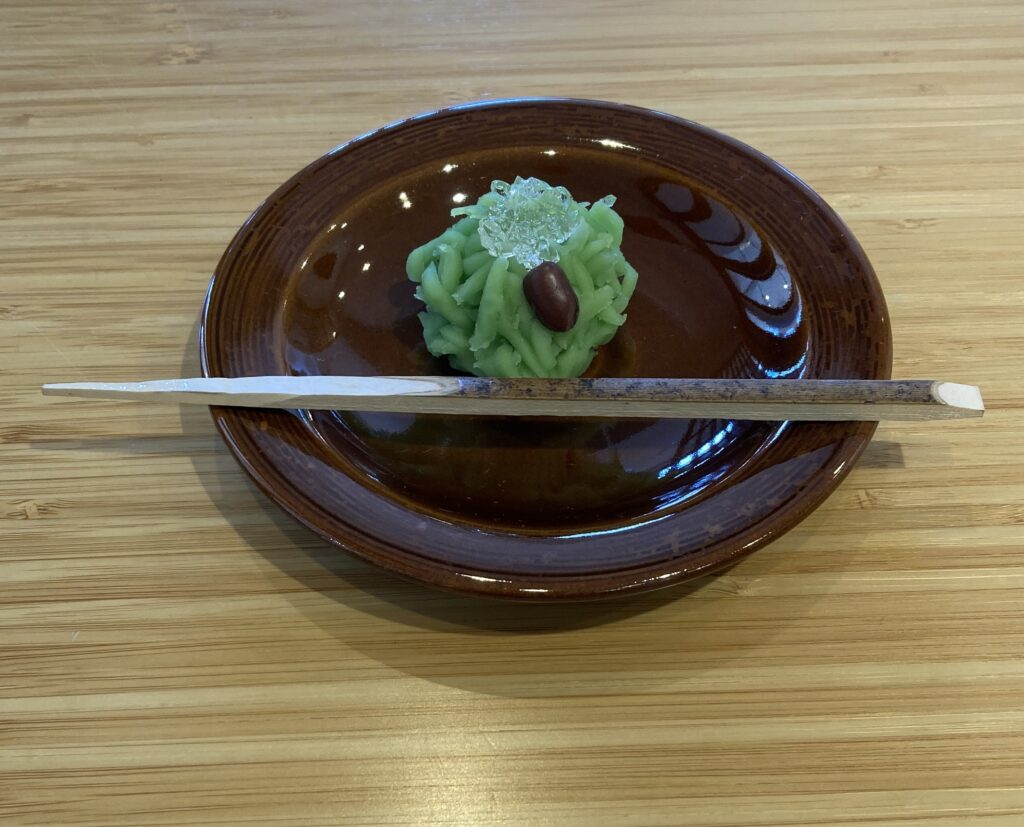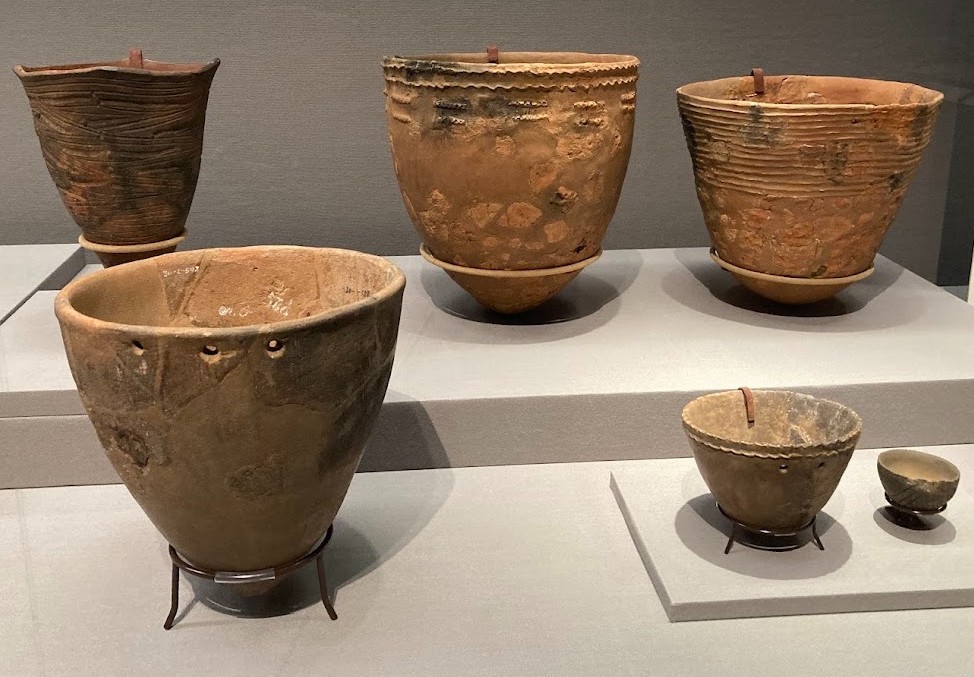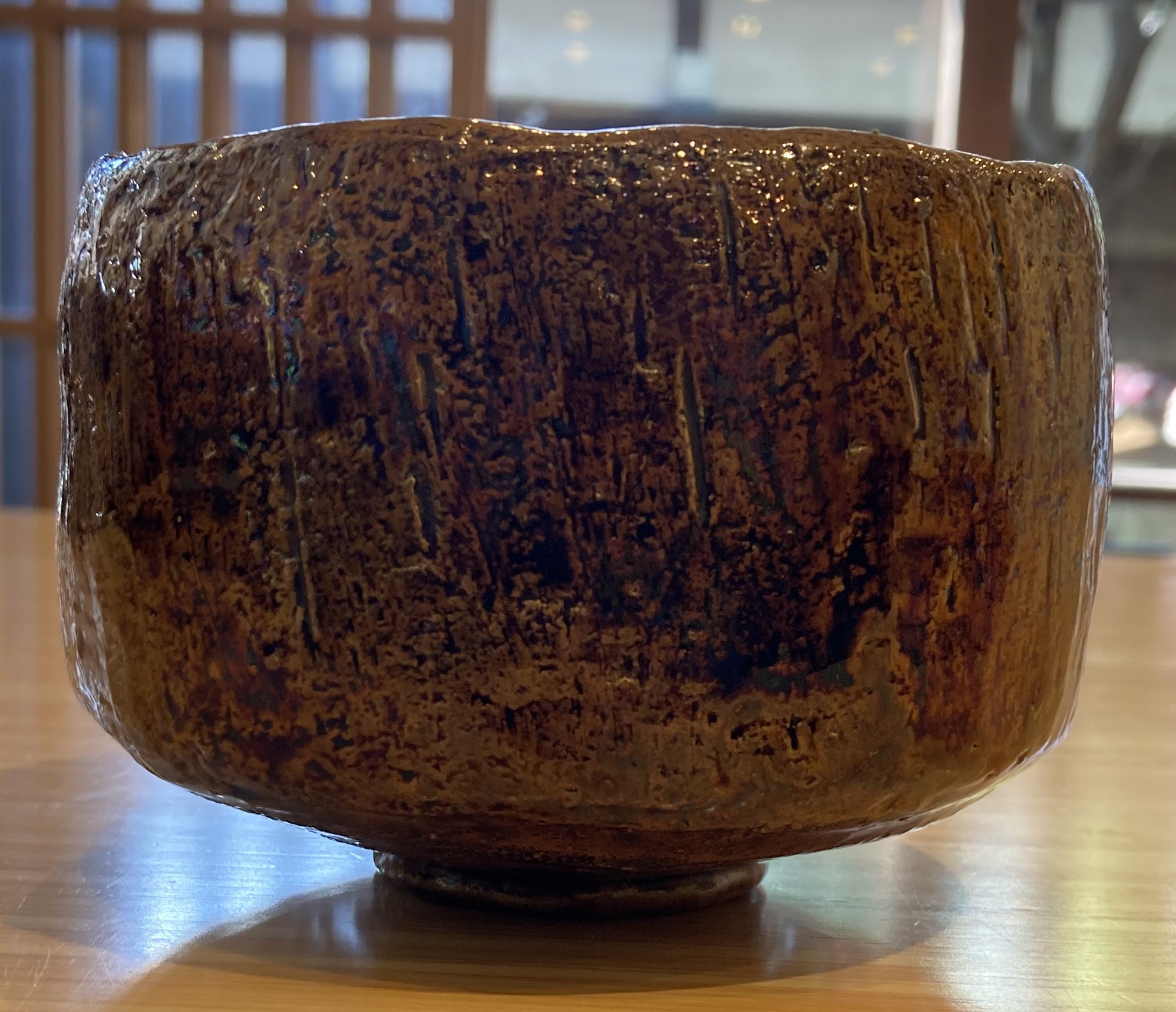0.Intrigued? Come Experience It—We’re Waiting for You!
This blog provides a clear and concise introduction to Ohi ware—an extraordinary, sculpture-like clay tea bowl within Japan’s rich pottery tradition, with a history spanning over 350 years. Among Japan’s many forms of traditional pottery, Ohi ware stands out for its asymmetrical, unproportioned form and distinctive ‘Ame-yu’ (Amber Glaze) color.
Whether you’re a foreign visitor, a business traveler, or a student exploring Japanese culture, this guide is for you! If these descriptions spark your curiosity, I warmly invite you to experience the world and beauty of Ohi ware in person.
1. Does This Intrigue You?
For those unfamiliar with Ohi ware, I’ve prepared a short introduction. If any of this resonates with you, why not come and experience this incredible pottery tradition for yourself?
1.1 Unique Ceramic Artifacts in Both Appearance & History?

- Ohi ware holds a unique place in Japanese pottery, both in its appearance and history. With its asymmetrical, unproportioned form and distinctive “Ame-yu” (Amber Glaze) color, these bowls have been treasured for over 350 years, passed down exclusively within the Ohi family as a hidden heirloom for the tea ceremony.
1.2 A Presence Like a Clay Sculpture, Not Just a Vessel?
- Many may appreciate Ohi ware bowls not as tableware, but as clay sculptures, given their unique presence. Their creation follows the ‘hand-formed’ technique, entirely foregoing the use of a potter’s wheel. Ohi masters shape each bowl solely with their hands and carve the surface with a spatula, resulting in a form and texture reminiscent of clay sculpture—allowing one to forget its role as a tea bowl and instead experience something truly unconventional.
2. Do These Messages Spark Your Curiosity?
If the previous section didn’t capture your interest, don’t worry—I’ve explored each theme a bit further. If any of these catch your eye, I’d love for you to stop by!
2.1 Architecture and Craftsmanship
👉A Michelin-Starred Private Museum?

- For architecture enthusiasts, the Ohi Museum of Art is a must-visit. It has achieved the remarkable distinction of receiving a Michelin star—an unprecedented honor for a private museum. The building itself is a masterpiece, featuring ceramic walls crafted by the tenth-generation master of the Ohi family. Furthermore, the gallery and tearooms embody contemporary Japanese aesthetics, seamlessly integrating natural materials such as bamboo and Japanese paper, designed by renowned architects.

2.2 Fashion
👉Feel Like a Tea Master in a Kimono—Just by Holding Ohi Ware?


- Ohi ware is widely used in tea ceremony classes across Japan, valued as a top-tier tea bowl originally crafted for the tea ceremony over 350 years ago. If tea is served in Ohi ware during your own tea ceremony experience, it presents the perfect opportunity for a memorable photo. Its uniquely soft and comfortable texture in the hand allows you to fully immerse yourself in the ambiance of a tea master elegantly dressed in a kimono.

2.3 Art
👉Is the Ohi Family Itself More Artistic Than Ohi Ware
- The artistry of Ohi ware lies not only in its vessels but also in the Ohi family itself, which has preserved and refined its traditional techniques for over 350 years across ten generations. A testament to this legacy is the eleventh-generation master, born after the war, and his young son, both of whom have transcended the boundaries of tradition to gain international recognition as contemporary artists and designers. Their lifestyle reflects the essence of their techniques—hand-forming their vision, spatula-carving their strategy, and coloring the family’s image with the signature caramel-colored ‘candy glaze.’ In enduring various criticisms, they undergo a process akin to rapid cooling firing, tempering and strengthening the values of their lineage.
2.4 Food
👉A Nervous Tasting Experience—Without the Taste?


- The tea room at the Ohi Museum of Art in Kanazawa, known as the city of samurai, offers a unique and affordable way to enjoy a tea ceremony. Guests receive exclusive Japanese sweets and are then served matcha (powdered green tea) in tea bowls made by generations of Ohi ware masters. Some people feel a little nervous at first, so if you visit with friends, you can quietly enjoy the experience and surprise them by sharing your thoughts later.
2.5 The Japanese
👉Can Ohi Ware Reveal 2,000 Years of Japanese Spirituality?

- Ohi ware may be one of the finest tea bowls for experiencing the Japanese aesthetic through the tea ceremony. In the tea tradition, the imperfection of a tea bowl is not a flaw but a defining feature—an embodiment of wabi-sabi, which finds beauty in imperfection. Yet this appreciation of imperfection extends beyond tea bowls and can be seen in vessels over 2,000 years old. By holding Ohi ware in your hands and feeling its imperfect form, you may come to understand the essence of the Japanese spirit in its most profound and purest form.

☞ Ad: Recommended Insurance (Partner Link)
Just as a complete tea ceremony experience requires not only Japanese sweets but bitter matcha—served in tea bowls crafted by generations of Ohi ware masters—your travels are enriched by thoughtful protection. Travel insurance, much like matcha, may seem bitter at first, but it is essential to ensuring a smooth and secure journey.
Thank you & Afterwards
Thank you very much for reading to the end of this issue. If you have any comments or requests, please feel free to contact us at the Help Desk.🔶Gold🔶R70508.v.4b.4b.3a/+250508


